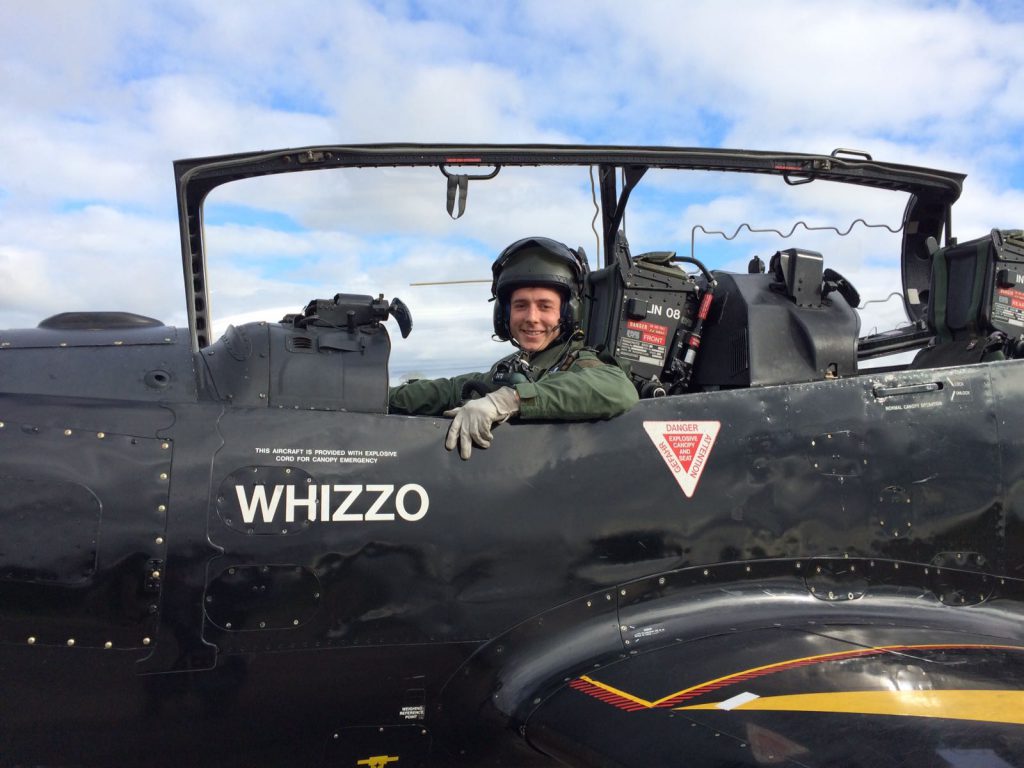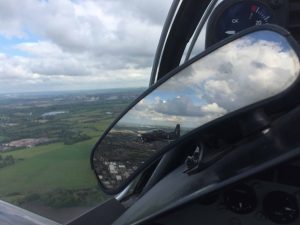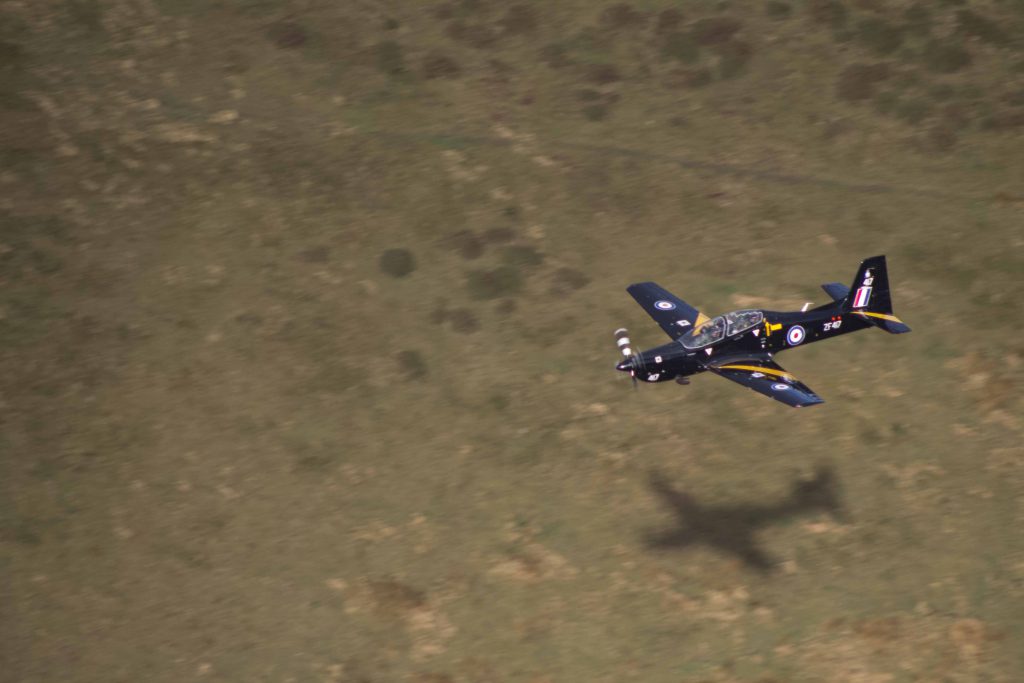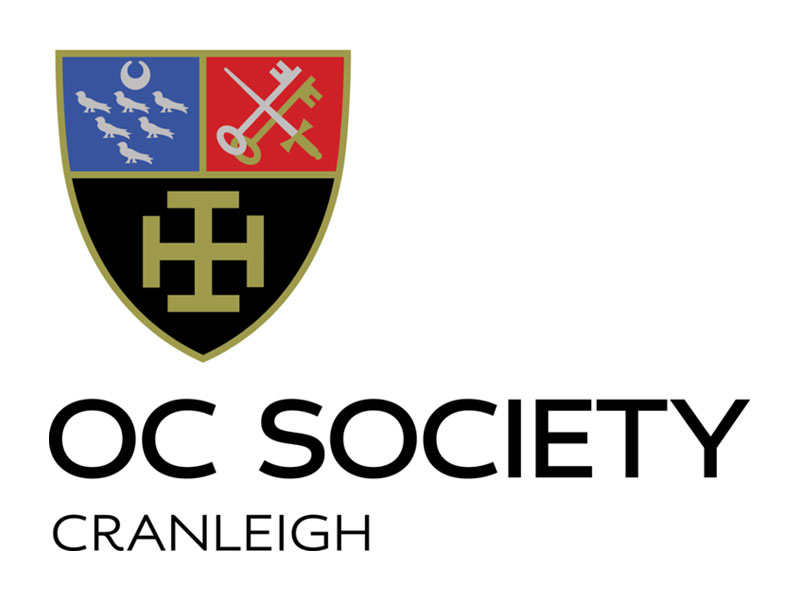 Peers Lyle (Loveday, 2005-2010) is a Royal Air Force pilot, who has just finished Basic Fast Jet Training on 72(R) Squadron at RAF Linton-on-Ouse in North Yorkshire, and is awaiting Advanced Flying Training on the Hawk T2 aircraft, prior to conversion on to the front line aircraft of either the Eurofighter Typhoon or the F-35 B Lightning II.
Peers Lyle (Loveday, 2005-2010) is a Royal Air Force pilot, who has just finished Basic Fast Jet Training on 72(R) Squadron at RAF Linton-on-Ouse in North Yorkshire, and is awaiting Advanced Flying Training on the Hawk T2 aircraft, prior to conversion on to the front line aircraft of either the Eurofighter Typhoon or the F-35 B Lightning II.
Here Peers describes his exciting journey to being awarded the coveted ‘wings’ brevet and what the future holds.
“I first became interested in the Royal Air Force during my GCSE year at Cranleigh School, and was fortunate enough to spend my work experience with 3(F) Squadron at RAF Coningsby in Lincolnshire. Being surrounded by the impressive Eurofighter Typhoon aircraft, and watching the RAF pilots at close hand convinced me this was career worth pursuing. Through the AFCO (Armed Forces Career Liaison Officer – the most effective way of starting a career in the military), I attended the Officer and Aircrew Selection Centre at RAF Cranwell during my final year of Cranleigh in March 2010. I was lucky enough to be awarded a bursary with the RAF, enabling me to go to University in the following September.
I studied a Masters in Chemistry at the University of Oxford from 2010 to 2014, keen to build a ‘back-up’ option if my desired career in the Armed Forces was unsuccessful. There are many hurdles from the start of training to being on the front line, most of which are out of one’s control, so I felt it was prudent to have something to fall back on if required. During my time at university, I was a member of the Oxford University Air Squadron, where I was taught the basics of flying and was able to travel to numerous countries, including France, Switzerland, Norway, Denmark, Iceland and Greenland. The University Air Squadron system is throughout most of the country’s universities and available to most UK citizens. It is a brilliant way to earn some money during your studies, as you are a member of the RAF Volunteer Reserve, with absolutely no obligation to join the military afterwards. It opens up exciting opportunities to learn to fly, take part in adventurous training all around the world, and play sports at a high level and develop your abilities in both leadership and management skills.

Following a busy and enjoyable university career, I started full time employment with the RAF in July 2014, attending Initial Officer Training at RAF Cranwell. This is an intense nine months of leadership training in preparation for the rest of your career as an officer in the military. All pilots undertake this training, along with officers from all the other branches in the RAF. The leadership training is accompanied by development of military skills, physical fitness, presentation skills, academic assessment and a huge amount of fellowship – the ability to be a good team player.
Having gained my commission and passing out of RAF Cranwell, I visited the Kingdom of Saudi Arabia before undertaking some basic survival training at the SERE (Survival Evasion Resistance Extraction) training school. This is a two week course designed to give you the basics of how to survive in the wild with a scarce amount of food and help, focusing on mental toughness and physical endurance. Completion of this course was followed by starting flying training on 16(R) Squadron at RAF Wittering near Peterborough. Here I completed EFT (Elementary Flying Training) over roughly nine months, flying the Grob Tutor. This is a relatively short course designed to give trainees the basic flying skills they will need later on in their careers, and takes a novice pilot to the level slightly beyond a civilian Private Pilots License.
Following graduation from EFT, all RAF pilots are streamed depending on the service requirements, individual abilities and trainees’ preferences to either fly Fast Jets, Helicopters or Multi-Engine Transport Aircraft. Having been streamed Fast Jets, I started BFJT (Basic Fast Jet Training) on the Tucano T1 at RAF Linton-on-Ouse. This course is a significant step up from EFT, with focus on tougher navigation tasks, larger amounts of formation and aerobatic flying, and increasingly challenging scenarios in which you are expected to operate the aircraft. This course takes approximately nine months, and concludes with trainee pilots being awarded their coveted ‘wings’ brevet, to be worn on their uniform thereafter. I graduated this course in May 2017, and am awaiting further flying training at RAF Valley. This will be another intense course, taking roughly 14 months, before I will finally get on to the front line. As is evident, the process is extremely long, but well worth the hard work and sacrifice required. If anyone is interested in a career along these lines, or in any of the UK Armed Forces, then feel free in get in touch as I’d be more than happy to help.”

